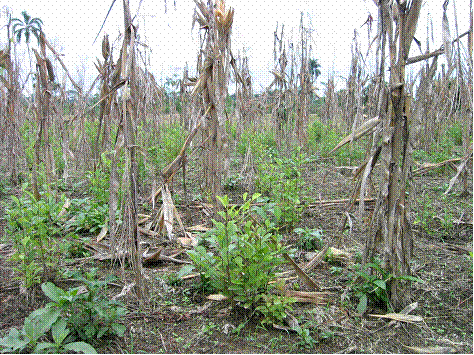 |
| Home | | |
Analyses | | |
Aid | | |
| |
| |
News | | |
| |
| |
| |
|
Last
Updated:6/18/04
|
|
Testimony
of Adam Isacson, Director of Programs, Center for International
Policy, hearing of the House Government Reform Committee: "The War
Against Drugs and Thugs: A Status Report on Plan Colombia Successes
and Remaining Challenges," June 17, 2004
Testimony
of Let
me begin by thanking the Committee for holding a hearing on the
status of Plan Today,
we have heard many glowing assessments of what Plan Colombia has
achieved so far, and many optimistic predictions about the near
future. Colombian government statistics are indicating less violence
and reduced coca cultivation. I have no way of disputing these
data; no organization has the ability to take their own measurements.
However, my own recent interviews with local officials, religious
and community leaders in I
would like to talk about the example of
Most
tellingly, everybody I asked both in Similarly,
even though the State Department’s statistics tell us that coca
acreage has been dropping since 2001, the price, availability
and purity of cocaine in This should tell us that the traffickers are adapting, yet again, to increased fumigation. To counter this, we will have to do something else than just fumigate more. Sending planes to spray people overhead won’t do it: if you want to eradicate drugs, there is no substitute for governance. There is no substitute for a civilian government presence, with officials who are able to look people in the eye and say “what you are doing is illegal, but we’re committed to providing the basic conditions you need to make a living” – which is the role every government has to play. So far, we’re nowhere near there. Of the 3.15 billion dollars the United States has given Colombia since 2000, only 20 percent is aimed at improving civilian governance or alleviating poverty - even though 82 percent of rural Colombians live below the poverty line. [2] The rest of our aid has gone to guns, helicopters, and spray planes. And
the U.S.-funded military buildup is very evident in In
April, I had to take a canoe across the Certainly, the pattern of violence had changed in response to the military buildup. A greater security-force presence has forced guerrillas out of town centers and away from the main roads, so that road travel was considered safer than it had been three years ago. Paramilitaries were present, but much less obvious, in the town centers. But I received numerous reports of a greatly deteriorated security situation in the rural zones, further from the main roads, where the armed groups are able to act with complete freedom and are fighting over profits from the coca trade. Populations are caught in between, and it is considered very risky to travel from the guerrilla-heavy rural areas to the paramilitary-dominated town centers, even to buy food or to get health care. So
violence continues and cocaine persists in The
last several years in When
the military leaves, they leave nothing behind but a vacuum. Sometimes,
the paramilitaries fill that vacuum. (Just in the past couple
of years, we’ve seen that in the Comuna 13 neighborhood of Medellín,
Nariño’s Pacific coast, northwestern Cundinamarca department,
and southern If
we keep pursuing an unbalanced, overly military strategy – call
it Plan Patriota or Plan If
we’re going to help I
know it seems odd for me to be calling for a fundamental change
in direction after you’ve heard several officials testify about
the supposed success of the current strategy. But I hope the contrary
evidence I’ve presented in these few minutes is enough to make
clear that victory is far from around the corner. In fact, if
we continue on the present path, the next phase of Plan Thank you, and I look forward to your questions. [1] UN Office of Drug Control and Crime Prevention, Censo de cultivos ilícitos en diciembre de 2002 & Estimado intercensal en julio de 2003, September 2003 <http://www.unodc.org/pdf/colombia/colombia_coca_report_2003-09-25_es.pdf>: 51. [2] Fernando Millán, “La tierra, comienzo y fin del conflicto,” El Tiempo (Bogotá, Colombia: October 12, 2003) <http://eltiempo.terra.com.co/coar/estostienesalida/ARTICULO-WEB-_NOTA_INTERIOR-1282804.html>. |
|
|
| Asia | | |
Colombia | | |
| |
Financial Flows | | |
National Security | | |
| Center
for International Policy |
 I saw less coca
in
I saw less coca
in 